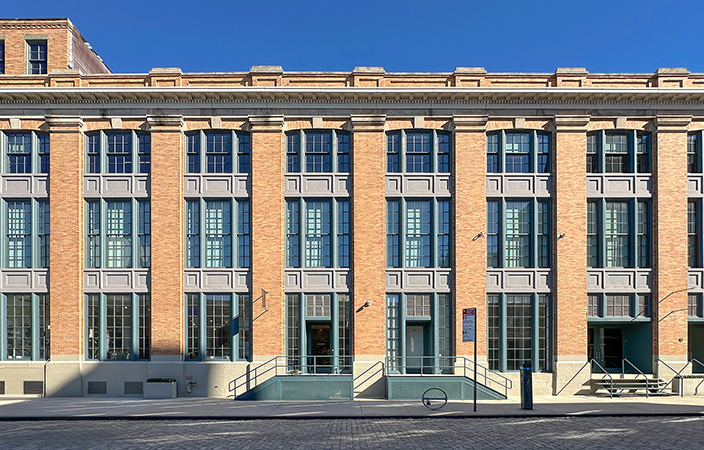The importance of infrastructure inspections - by Nagesh Goel

With approximately $500 billion spent on infrastructure in the U.S. annually, ensuring large-scale infrastructure—like buildings and bridges, pipelines, roadways, and electrical grids—are safe and secure is of critical importance not just to the building teams, but to society as well.
With more projects on tight deadlines, particularly those that create public inconveniences such as road closures, there is increasingly greater pressure to finish and sign-off on a project to get it done. While the urgency to finish is palpable, it is not as important as a thorough inspection to ensure the project’s long-term stability and safety. How can we ensure we get the highest quality inspections in a thorough, yet timely, manner?
The answer is to work with an experienced infrastructure inspection partner. An infrastructure inspection firm can efficiently and cost-effectively assess quality aspects, along with risks.
Inspections include many aspects of a project site, including its geotechnical features, soil, concrete, steel and welding, masonry, architecture, asphalt, along with progress inspections and entire buildings. An infrastructure inspector will know what to look for and determine if it’s safe.
When considering an infrastructure inspection partner, seek out a partner whose business emphasizes the following ideas:
Utilizing data: Smart infrastructure inspection firms will track a wide variety of data points, and implement them to better future project outcomes. The question is, how can a project benefit from data? The answer is simple: leverage this data to inform projects in the short- and long-term for greater results. For example, after a few months on a large project, we can start providing predictive analytics on important questions. We can answer short-term questions like, which welding procedure is giving the least amount of rejection? Which concrete mix from which plant, delivered at what time of day, tends to give better results? In the long term, data from similar projects or using similar procedures can provide us with a full risk analysis model. This can be very useful to the owner from an underwriting perspective. The added value from past project data is immense and should be leveraged for greater safety and profitability.
Harnessing technology: Technology is critical in the building sector. From an infrastructure perspective, there are technologies being developed now that are light years ahead of past techniques, providing a highly effective—and safer—result. Spectral Wave Ultrasonic Testing, which is used to analyze hard-to-access areas, such as a bridge pin, can determine structural integrity quickly and easily. Other technologies include Eddy current (EC) testing, which is a no-contact means of inspecting metallic parts, a powerful tool in the non-destructive testing (NDT) toolbox. On the civil side, spectral analysis helps to analyze structures with electromagnetic interactions. An experienced inspector may utilize these technologies and more for a thorough inspection. Structural or material problems can more easily be detected, in order to find solutions, and make structures safer.
Living their values: Infrastructure inspections start with people. It is of utmost importance to emphasize project quality over quantity. The mantra that we tell all our inspection engineers is called IKASH: integrity, knowledge, attitude, skills, and habits. Together, these qualities make a successful infrastructure inspector and professional. Integrity, which is defined as the quality of being honest and having strong moral principles, is the biggest aspect here. In the building sector, there is a prevailing practice of overcharging. We believe in charging only for the time spent on the job. Rather than fitting in as many jobs as possible in a day, for our team, there is incentive to stay and get the job done right. For as long as it takes, our on-the-ground inspectors are inspecting and evaluating for safety and quality first—not rushing off to their next job.
Technical training and tools: Technical experience is key for an infrastructure partner. Ensure your infrastructure partner has the experience and training to be able to deliver inspection results that will make your project safer for the long-term. Seek a partner with deep experience across civil, architectural and fire code, to mechanical, electrical and plumbing, to welding and NDT. Since there is a considerable amount of work with specimens brought in, a metallurgical lab allows us to conduct metallurgical analysis. This means we may uncover flaws and features in materials, evaluate the qualities and limitations of materials, how they perform under different temperatures and understand which materials are best to use in different projects. Most companies do not have this kind of facility, but we believe it is integral to our role as an inspection agency.
As one of the final steps in the building process, infrastructure inspection is also one of the most important. It’s a solution that government groups, general contractors, and the building industries can use to ensure quality, structural integrity, and overall public safety and long-term benefit. Infrastructure inspection can help groups reach these goals.
Nagesh Goel is president and co-founder at Atlas Evaluation & Inspection Services (AEIS), South Plainfield, N.J.
SABRE coordinates sale of six properties totaling 199,845 s/f


Behind the post: Why reels, stories, and shorts work for CRE (and how to use them) - by Kimberly Zar Bloorian

Lower interest rates and more loan restructuring can help negate any negative trending of NOI on some CRE projects - by Michael Zysman

Strategic pause - by Shallini Mehra and Chirag Doshi








.jpg)
.gif)
.gif)